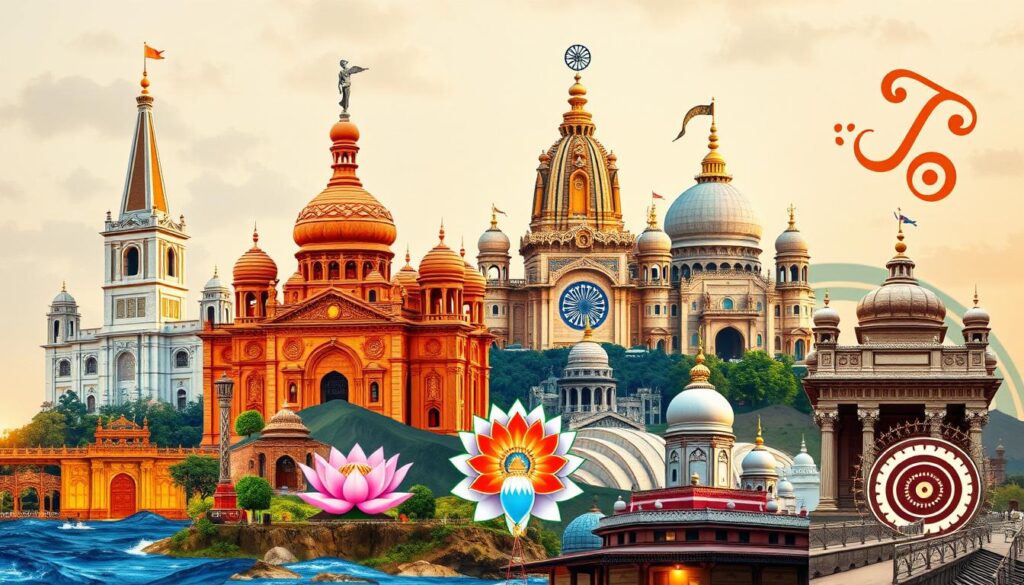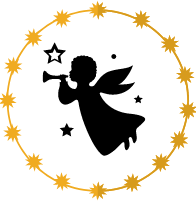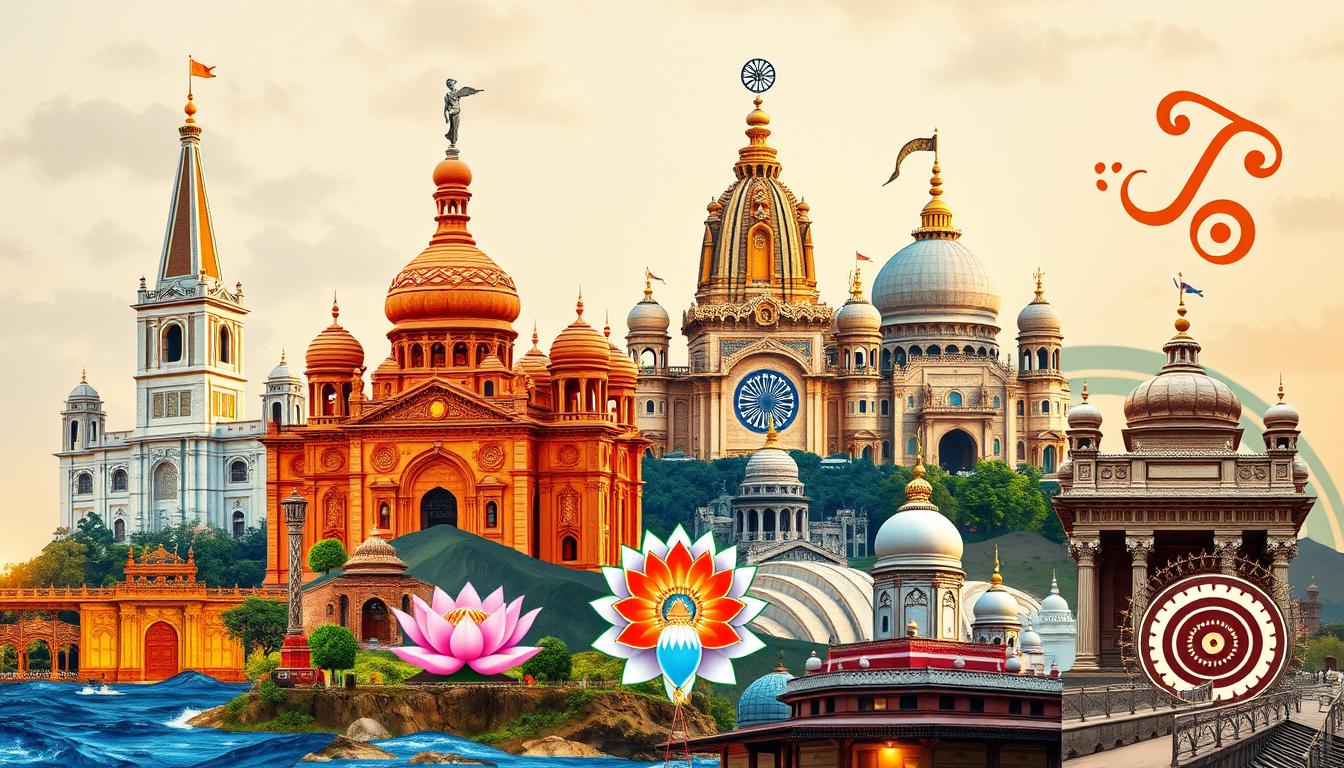Welcome to a journey into Hindu studies. This field explores the traditions and culture of Hinduism. It helps us understand India’s rich history and culture.
Weclome to checkreligion.com
Hindu Studies !
India was once a major player in global trade for over 2000 years. It contributed a third of the world’s trade.
This article will look at the history of Hindu studies. We’ll see important figures and key debates. We’ll also see why this field is still important today.
In the West, studying Hinduism has grown. But it has been shaped by Western views. There are now programs and scholarships to help students from India and other places.
Let’s celebrate the diversity of Hindu culture. We’ll see how scholars help us understand Indian spirituality better.
Key Takeaways
- Hindu studies focus on the diverse traditions and practices of Hinduism and Indian culture.
- India historically contributed to one-third of the world’s trade for over 2000 years.
- Graduates of Hindu studies programs gain valuable insight into foundational spiritual principles.
- The evolution of these studies reflects ongoing dialogues between insider and outsider perspectives.
- Scholarships, like the HUA Scholarships, are available for students from specific regions.
- Modern research on Hindu traditions continues to be published, enhancing the field’s academic depth.
- Courses in Hindu studies are designed to engage academics, professionals, and anyone interested in cultural enrichment.

Understanding Hindu Studies
Hindu studies are a mix of many things. They cover Hindu philosophy, culture, and ancient texts. Hinduism is the oldest living religion, making it very interesting to study.
It combines theology and critical thinking. This gives us a deep look at Hinduism’s history and its life today.
Hinduism is found all over the world. People from many races and countries follow it. In places like India, Nepal, and Mauritius, Hinduism is very common.
Its teachings talk about treating everyone like family. They focus on kindness, truth, and caring for others. This comes from its sacred texts.
The Vedas and Mahabharata talk about treating people with respect. They say everyone is equal. Ancient songs say we should all be happy and well.
This idea of being kind to all is very important. It shows Hinduism’s message of love and understanding.
Hindu studies mix many areas like culture and text analysis. It’s a lively field of study. It looks at Hindu philosophy and its many schools of thought.
Students learn a lot through classes and seminars. They get to understand Hinduism’s complex ideas deeply.
| Course Type | Credits |
|---|---|
| Core Courses | 30 |
| Electives | 21 |
| Reading Seminars | 4 |
| Dissertation | 9 |
| Total | 64 |

The Evolution of Hindu Studies in the Western Context
Hindu studies in the West have changed a lot. At first, people didn’t really get Hinduism. But, from 1789 to 1832, things started to change.
People began to see how deep and clear Hindu traditions were. This made them more curious about Hindu values and ways of life.
The word “Hinduism” came to be a way to talk about Hindu culture. It was made by Westerners and Hindus alike. They wanted to show what Hinduism really is.
In recent years, studying Hinduism in the West has grown a lot. Scholars have written many books about it. For example, Marco Ferrante looked into Indian philosophy and consciousness.
Ferdinando Sardella studied the Bengali Vaiṣṇava tradition during British rule. These books show how much interest there is in Hinduism.
Now, Western societies are starting to see the good in Hinduism. They like its ideas of non-violence and vegetarianism. Yoga is also becoming popular.
This has helped people understand Hinduism better. There’s so much Hindu literature, it’s amazing.
Even though they’re not from India, Western scholars are helping a lot. They’re making people more interested in Hindu philosophy. This shows how important it is to study Hinduism well.
Philological Era in Hindu Studies
The study of Hindu traditions has changed a lot. This change happened during the philological era in Hindu Studies. This time was all about Western scholars studying ancient Sanskrit texts.
British views on India were mixed. They were curious but also got things wrong. This led to bad views of Hinduism and Indian culture in schools and media.
Many outsiders thought Indian thought was messy. But as they dug deeper, they saw its true beauty.
British Perceptions of Indian Culture
At first, British scholars didn’t get Indian culture. They saw it as complex and deep later on. This change helped them see Hinduism as a real and deep spiritual path.
Hindus had been under control for a long time. This was since the 10th century. The Nehru-Gandhi family’s rule made things even harder. But, a new Indian leader in 2014 brought back pride in Hindu heritage.
The Emergence of Modern Hinduism as a Defined Religion
Now, Hindu Studies are taught in schools. This is thanks to insiders who want to fix old wrong views. They want more Hindus to know how to talk back to bad media and school stories.
By studying old texts, modern Hinduism can show its true self. It blends old beliefs with new ideas. Hindu Studies want to offer a fresh view that shows the real beauty of Hinduism.

Key Figures in the Development of Hindu Studies
Many scholars have greatly helped Hindu studies over the years. Their work shows a mix of deep learning and cultural understanding. These scholars have helped us learn more about Hindu religions and practices.
Wendy Doniger is known for her deep looks into Hindu texts. Her work has started big talks about how texts are seen and who writes them. She has also faced criticism for her views.
In the 1990s, schools started teaching about Hindu Theology. Places like the Hindu University of America led this effort. Even though they’re not recognized by the U.S. Department of Education, these programs are important.
Rajiv Malhotra spoke out in 2002 against using Freudian ideas to study Hindu texts. His words have made us think more about how we study religions. In 2007, “Invading the Sacred” came out, adding more to the talk about studying Hinduism.
Scholars like Russell T. McCutcheon talk about the challenges of studying Hinduism. They say we need to find a good balance between respecting cultures and doing our own research. This helps us understand Hinduism better.
The work of scholars and their views on Hinduism are very important. They help us see this ancient religion in a new light. Today, Hinduism is followed by nearly a billion people worldwide.
| Scholar | Contributions | Notable Works | Controversies |
|---|---|---|---|
| Wendy Doniger | Interpretation of ancient texts, cultural analysis | The Hindus: An Alternative History | Backlash from Hindu groups |
| Rajiv Malhotra | Critique of psychoanalytical approaches | Being Different: An Indian Challenge to Western Universalism | Debates over Western narratives |
| Russell T. McCutcheon | Insider/outsider problem analysis | Manufacturing Religion | Criticism of uncritical perspectives |
Institutional Growth of Hindu Studies Programs
Hindu studies programs in schools have grown a lot since the 1990s. This shows more people see how complex Hindu traditions are. They want to learn about them in school.
Doctoral Programs in Hindu Theology
Many schools now have special programs for studying Hindu theology. The Hindu University of America is a great example. It teaches a lot about Hindu studies.
But, there are still problems. People worry about the quality of these programs. They also think there’s not enough study on Hinduism today.
Today, more students want to study tech and science than Hindu studies. This makes it harder to find people who know Sanskrit and other Hindu languages. This gap makes it hard to talk about Hinduism worldwide.
Schools are important in how we see Hindu studies. But, we need more people from the Hindu community to help. They can share their views and help us understand Hindu traditions better.
Criticism and Controversy Surrounding Hindu Studies
Since the 1990s, Hindu studies have faced a lot of criticism. This mainly comes from North American Hindu communities. They say there are mistakes in how Hindu culture is shown in books.
Books like Wendy Doniger’s “The Hindus: An Alternative History” have caused big debates. They were even pulled from shelves in India because of legal issues. This shows how hard it is to show Hindu practices and history correctly.
The caste system is seen as very unfair by many. It affects millions of people. Groups like Human Rights Watch say it’s very wrong.
But, the Buddhist tradition has always disagreed with the caste system. They believe in equality and finding yourself. This difference in views adds to the debate in Hindu studies.
The sati practice is also a big point of criticism. It was banned in 1829 but still causes debates. Scholars and practitioners worry about how Hinduism is explained.
Recently, there have been protests about school materials. Hindu groups didn’t want changes to how Hinduism was shown in California textbooks. They started an online petition that got over 23,000 signatures.
The University of California at Irvine also stopped accepting donations for Indian religion professorships. This shows how big these debates are for schools.
Western academics often get caught in the middle of these debates. They face threats and anger for their views. This makes it very important to talk and understand each other better.
Hindu right groups are trying to change how Hindu history is told. This makes it even more important to find true ways to show Hindu culture.
| Controversial Topics | Responses by Hindu Groups | Impact on Academia |
|---|---|---|
| Caste System | Advocacy against negative representations | Withdrawal of donations from institutions |
| Sati Practice | Legal actions against authors | Increased scrutiny on historical narratives |
| School Textbooks | Petitions with thousands of signatures | Alterations in educational content |
| Academic Integrity | Public backlash against scholars | Threats to academic freedom |
Addressing the Insider/Outsider Problem in Hindu Studies
The debate in Hindu studies is complex. Scholars try to understand Hinduism from both inside and outside. Many Hindus in North America and India worry about how they are seen in Western schools.
Etic vs. Emic Perspectives
Looking at etic and emic views in religion study is key. These views shape how we see Hindu traditions. There are four ways to study: insider to insider, outsider to outsider, and more.
How scholars and Hindu practitioners work together has changed a lot. Debates in Hindu studies show biases and mistakes. Now, believers are speaking up against Western views.
Studies on Hinduism have grown. Before, they mostly looked at old, brahminical texts. Now, they include modern experiences and voices from all walks of life.
Groups like the American Academy of Religion are changing Hindu studies. They use critical race theory and fight against biases. This makes Hindu studies more open and diverse.
In short, using both etic and emic views helps us understand Hinduism better. By seeing both sides, we can show Hindu traditions more accurately.
Defining Hinduism: Debates and Discussions
Trying to define Hinduism has led to many debates. Scholars have come up with different ways to understand this old tradition. For instance, Flood in 1996 talked about a “prototypical” Hinduism. This idea looks at the common thoughts and practices in India, not strict rules.
This view makes us see Hinduism in a broader way. It helps us understand cultural identity better.
Klostermaier in 2007 broke Hinduism into four parts. He looked at the original people of India, the Indus civilization, ancient Dravidian cultures, and the Vedic traditions. This shows Hinduism is complex and can’t be defined in one way.
In the 21st century, defining Hinduism is more important than ever. Hindu nationalism and groups like the Bharatiya Janata Party (BJP) have made this topic hot. Their wins in 2014 and 2019 have started new talks about Hinduism’s role in India today.
These debates are important for Hindus all over the world. They affect how people see their culture and religion every day. Exploring these ideas is not just interesting but also very meaningful. It shows how cultural identity is always changing in a diverse world.
Hindu Studies: Its Contemporary Relevance
Hindu studies are growing, showing how important Hindu traditions are today. This field is seen in many areas, like philosophy and sociology. It shows how Hinduism is still relevant today.
There are over 50 book series on Hindu studies. This shows the wide range of knowledge in this field. Books like The Concept of Mind in Hindu Tantra by Gavin Flood will come out on November 18, 2024. Another book, Hindu–Christian Dual Belonging, edited by Daniel J. Soars and Nadya Pohran, will be released on January 29, 2024.
Works like Nyāya Sūtra – on Philosophical Method by Victor A. van Bijlert will come out on June 27, 2024. These books talk about gender roles, showing Hindu studies’ role in social issues.
This interest in Hindu studies is not just for learning. It helps us understand different cultures better. It shows how Hindu studies are important for today’s world.
These studies are a treasure trove of knowledge. They connect the past with today’s problems. As I learn more, I see how Hindu studies help us understand our world better.
Conclusion
Hindu studies cover many traditions, philosophies, and histories. It has grown a lot in the Western world. This growth has changed how people see Hinduism.
It also started important talks about who gets to be heard in schools. The Journal of Hindu-Christian Studies started in 1988. It showed how Hindu studies are growing by mixing old research with new practices.
The future of Hindu studies looks bright. Scholars like Margaret Chatterjee and Richard De Smet started important talks. These talks are about taking care of the planet and studying sacred texts.
This shows how Hindu studies keep getting better. It helps us face today’s big challenges. It also keeps up with new ideas from around the world.
Thinking about Hindu studies makes me see its value. It gives deep insights to scholars and those who want to learn more about Hinduism. The community’s work ensures Hindu studies will keep being important for a long time.
FAQ
What is Hindu studies?
Hindu studies is a field that looks into Hinduism’s traditions and beliefs. It explores Hindu philosophy, culture, and texts. It aims to grasp the depth of Hinduism as a living and historical religion.
How has Hindu studies evolved in the Western context?
Hindu studies in the West has changed a lot. At first, people were skeptical. But by 1832, scholars saw the richness of Hindu traditions.
The term “Hinduism” started to describe the varied beliefs and practices in India.
Who are some influential figures in Hindu studies?
Key figures like Wendy Doniger have shaped Hindu studies. They’ve given deep insights into Hinduism and its stories. Their work has sparked important debates in the field.
What are the criticisms of Hindu studies?
North American Hindu groups have criticized Hindu studies. They worry about how their culture is shown in books. They question the knowledge of scholars and the fairness of Western views on Hinduism.
What is the insider/outsider problem in Hindu studies?
The insider/outsider problem is about studying Hinduism from different views. Critics say each view has its strengths and weaknesses. A balanced approach is needed for a true understanding of Hindu traditions.
Why is it important to define Hinduism accurately?
Debates on defining Hinduism are key. They touch on who gets to decide, cultural identity, and how we’re seen in books. These talks affect Hindus’ lives and how the world sees Hinduism.
What is the contemporary relevance of Hindu studies?
Hindu studies is still important today. It matters in education, cultural exchange, and talks between different faiths. It helps us understand global diversity, spirituality, and living ethically.

